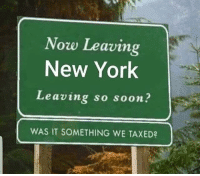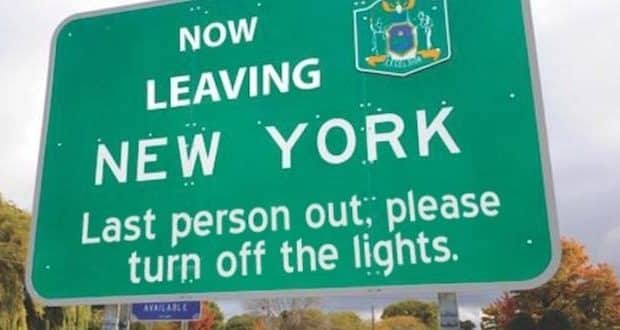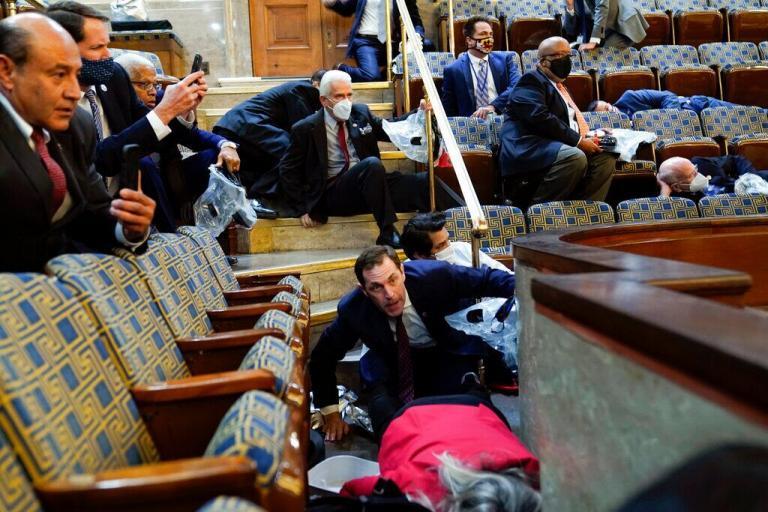The most dangerous drive in America is I-95 Southbound. The interstate highway is packed with moving vans and automobiles filled with taxpayers and their belongings who are escaping the terrors of the tax-crazed politicians in the State of New York.
New York, for centuries, was the cocksure king of the pecking order of states. New York attracted the best and brightest who believed the words that Sinatra sang so beautifully: “If I can make it there I’ll make it anywhere.” This hubris that engulfed New York led to some poor public policy decisions eventually led to today’s exodus from the Empire state.
Years ago, New York began hiring additional public sector employees which required the state to adopt higher tax rates to pay for their salaries. The politicians realized that if they increased the salaries of the public sector employees, those happy government workers would vote to keep the politicians in office on election day. Year after year, negotiations with the public employee unions was little more than the politicians caving in to the demands of the union bosses.

How could the state of New York increase the number and pay of public employees? It was simple. They continued to raise the tax rates. Most of the major US corporations had large offices in New York so the politicians acted as if they had a captive taxpayer base. “Tax the wealthy corporations and their fat-cat executives.” “Make the wealthy pay their fair share.” Sounded like a Bernie Sanders and Elizabeth Warren revival meeting.
At the same time as New York was adding public employees to the payroll the state also began paying higher welfare benefits to an increasing number of New York residents. These benefits grew every year and in some instances the benefits were nearly double the welfare benefits paid by states such as Florida. The welfare beneficiaries in New York are knowledgeable about their benefits and very few ever move their official residence out of New York.
The Wall Street Journal recently published a comparison between the states of New York and Florida. Florida has 22.4 million residents while New York has 19.6 million residents. New York’s top income tax rate is 10.9% while Florida’s top tax rate is 0%. The top income tax rate in New York City is 14.8% while the top income tax rate in Miami is 0%.
The state sales tax rate in New York is 4% while the state sales tax rate in Florida is 6%. The state unemployment tax rate is 4.3% in New York versus 2.5% in Florida.
Recently, the Governors of New York and Florida proposed new state budgets. The New York budget is $227 billion while the Florida budget is $115 billion.
Medicaid spending in New York is $26 billion which increases to $73 billion with federal dollars. Medicaid spending in Florida is $9 billion which increases to $29 billion with federal dollars. New York has 7.7 million Medicaid recipients while Florida has 5.6 million.
These numbers give evidence that New York is not losing any welfare recipients which affects the liability side of their balance sheet. Welfare recipients who move from New York to Florida would lose a huge amount of yearly aid. If you are receiving welfare benefits from New York you will endure the cold in return for the cold hard cash.
Recently, changes have occurred in the workplace that have allowed employees to live remotely from their workplace. This has led to an exodus of employees from the state of New York. Why would they continue to live in a high tax rate with cold weather and high crime rates when they can live in a more tax-friendly state? More and more corporations are choosing to relocate from New York to states that are more financially competent.
New York has lost billions of dollars in tax revenue because they chased away the taxpayers with higher tax rates.
Floridians are thankful we have a Governor and Legislature that are prudent and conservative when it comes to spending taxpayer dollars. There is no guarantee that this will always be the case. Voters need to be careful with their votes to insure that Florida does not go the way of New York and increase budgets during good economic times which sets up liabilities that are hard to eliminate when the economy enters a recession.

Bob Spencer
Publisher
Manatee Herald
publisher@manateeherald.com







